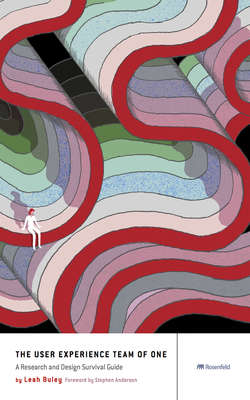Читать книгу The User Experience Team of One - Leah Buley - Страница 22
На сайте Литреса книга снята с продажи.
Establish a Point of View on the Work to Be Done
ОглавлениеBefore you get started, it’s a good idea to have a clear picture of what work needs to be done and how you can best contribute to it. The good news is, you don’t really need permission to be a UX team of one. You can infuse the UX philosophy into work that you’re currently doing. You can also find small opportunities to get started. You might think that if you want to transition to UX, you should start by changing your title and your role. But asking for a wholesale role change before you’ve gotten people to understand and see the value in UX might be a long shot. It’s better to start doing UX-related activities in smaller, under-the-radar ways, and then build momentum from the positive support that your work causes.
Here are a few recommendations as a foundation for any crossover. They’re not UX activities per se, but they pave the way for them:
• Find the low hanging fruit. Entice your colleagues with a vision of what might be. Find the parts of the product that everyone knows need improvement, and then plan your attack from there. However, it’s key to do it in a way that is positive and respectful. Use a “Black Hat Session” (Chapter 8) to get people thinking about where and how your product might be improved, or a quick “Heuristic Markup” (Chapter 6) to do the legwork on your own.
• Make a plan. If you want to get people to buy into the concept of UX, you’ve got to be offering them something of value. How do you do it? Sit down and sketch out how you’d like to approach a UX project. Think about what activities you’d propose—when and why. Think about what big questions you believe need to be answered, and work your way backward in thinking through how you’d answer them. Write a “UX Project Plan” (Chapter 5) to make it clear in your own mind. And then, ask yourself, “Do I need permission or support to do this, or is it possible that I might be able to do it now?” You may find that the answer is that you can just get started right away.
NOTE METHOD CARDS
Method cards are a great tool for identifying quick activities that you can do in the course of a normal workday to infuse a user-oriented perspective in your work. The user experience design firm IDEO has created method cards that can be purchased (see the top box in Figure 2.9). Trading cards from the user experience design firm nForm are shown at right, and they can be found online: http://nform.com/tradingcards/. Or you can create your own collection, as shown at the bottom.
FIGURE 2.9 A variety of method cards.
TIP BYPASSING OBJECTIONS
If you encounter objections and you need permission, the following tip might be helpful. Sales pros have a clever technique called the “alternative close.” Instead of asking permission to close the deal (or, in this case, to do the work), they provide two alternatives for how to go about it. Not, “Can I ring you up?” but rather, “Will that be cash or charge?” In UX, an equivalent would be not “Can we do some research,” but rather “We could do a large research study, or we could do a small informal evaluation to get some quick feedback.” Then the negotiation becomes not if, but how.
